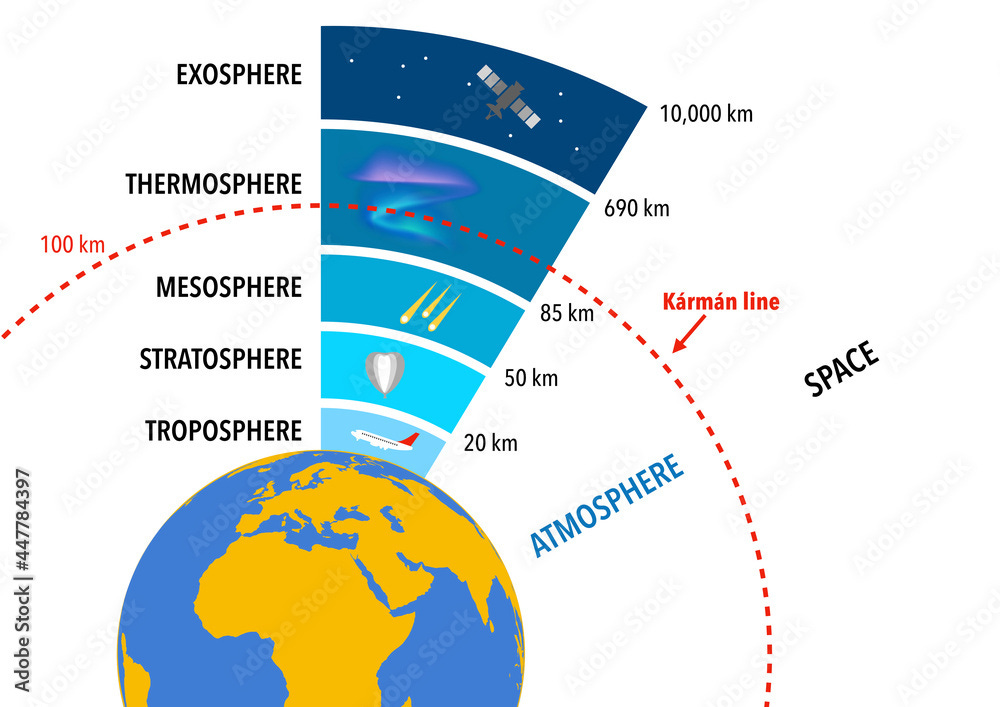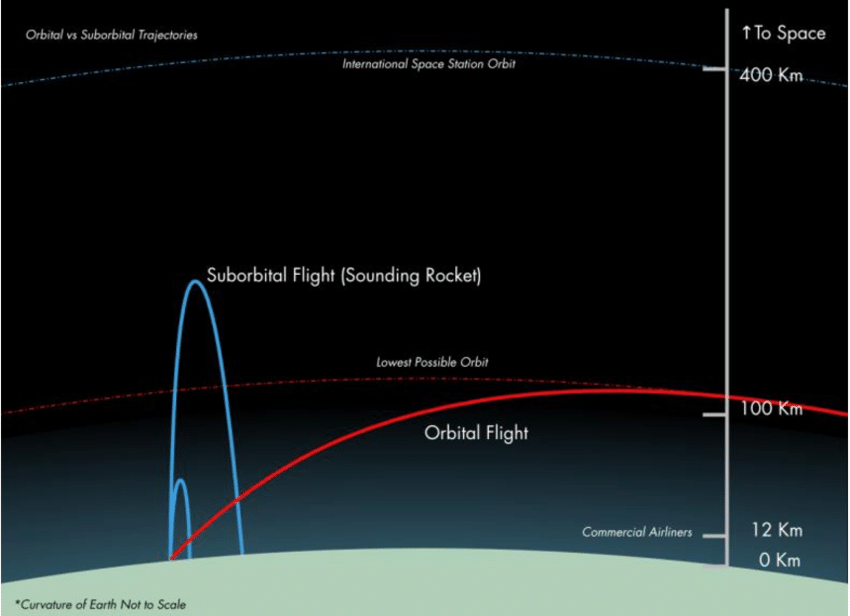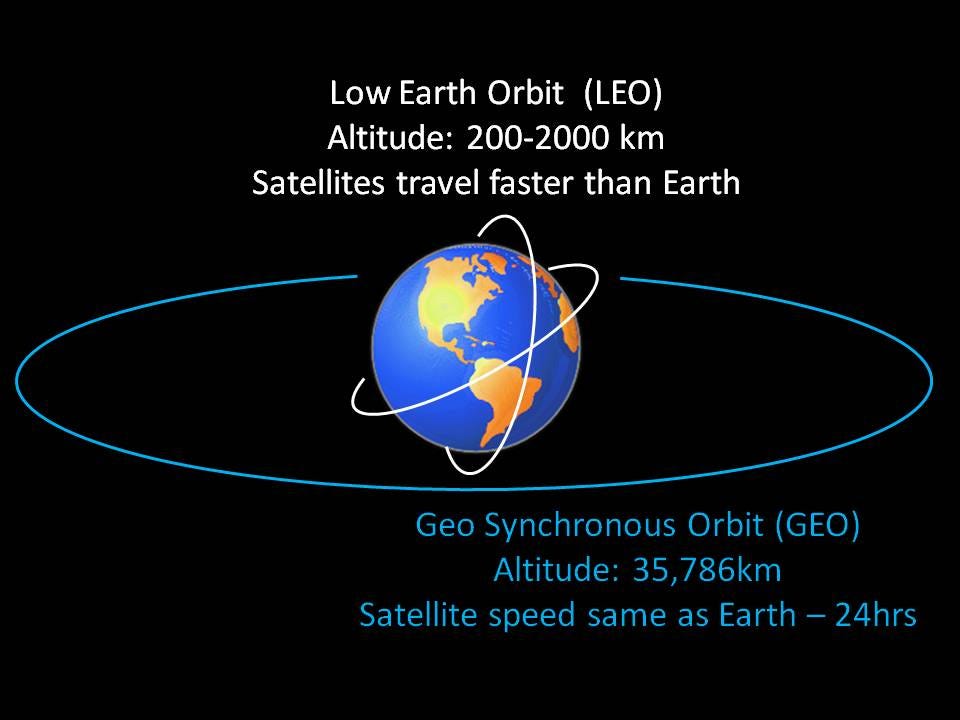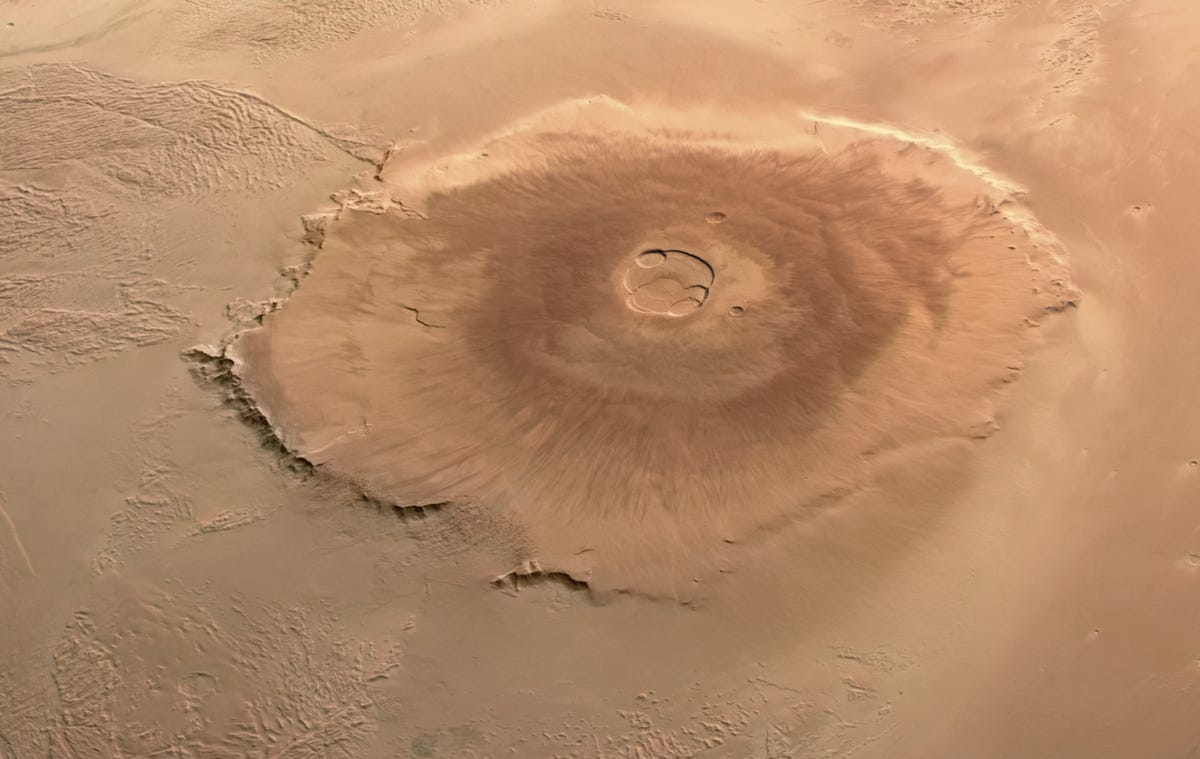Exploring the Heights
Understanding Suborbital and Orbital Rockets
Recently, Spanish company PLD Space launched its first suborbital rocket Oct. 6. What is suborbital rocket? What is its purpose? And what is meant by orbital rocket? Let’s try to understand it one by one.
🔭 Space Trivia
What is the name of the largest known volcano in our solar system, located on Mars?
A. Mount Kilimanjaro
B. Olympus Mons
C. Mount Vesuvius
D. Mauna Loa
Right answer is provided at the end of this article, with more details.
In the vast realm of space exploration, rockets are our reliable companions, lifting us beyond Earth's atmosphere and into the mysteries of the cosmos. These remarkable machines come in various shapes and sizes, serving a multitude of purposes. In this article, we embark on a journey to explore the heights, from the boundary of space known as the Kármán line to the fascinating world of suborbital and orbital rockets.
The Kármán Line: Where Earth Meets Space

Before delving into the world of rockets, it's essential to understand the Kármán line. Named after the Hungarian-American engineer and physicist Theodore von Kármán, this imaginary boundary marks the point at which Earth's atmosphere effectively ends, and space begins. Situated at an altitude of approximately 100 kilometers (62 miles) above sea level, the Kármán line holds special significance in space exploration.
Significance of the Kármán Line
The Kármán line is not merely an arbitrary demarcation; it has important implications for various aspects of space exploration and international law. Here are some key points:
Boundary of Space: The Kármán line is widely recognized as the boundary of space. This is where Earth's atmosphere becomes exceedingly thin, and traditional aircraft can no longer generate sufficient lift to maintain flight.
Astronaut Status: Those who venture above the Kármán line are considered astronauts, regardless of whether they reach orbit. This distinction is essential in recognizing and celebrating human spaceflight achievements.
International Space Law: The Kármán line plays a role in international agreements and space law. For instance, the Outer Space Treaty, which governs the use of outer space, refers to outer space as the "province of all mankind," emphasizing the peaceful nature of activities beyond this boundary.
Now that we have a grasp of the Kármán line's significance, let's delve deeper into the world of rockets.
Suborbital Rockets: Touching the Edge of Space
Suborbital rockets are a unique category of launch vehicles that provide a taste of space travel without achieving orbital velocity. These rockets follow a distinctive trajectory and serve various purposes, from scientific research to space tourism.
Trajectory and Altitude
Suborbital rocket trajectories are characterized by their parabolic shape. They ascend vertically, powered by powerful engines, before arcing over and descending back to Earth. While they reach impressive altitudes, often exceeding 100 kilometers, they lack the velocity required to establish a stable orbit around our planet.
Duration and Weightlessness
Suborbital flights are relatively short in duration, typically lasting only a few minutes from launch to landing. However, within this brief timeframe, passengers and payloads experience a mesmerizing phenomenon: weightlessness. During the rocket's ballistic trajectory, occupants inside experience moments of true microgravity, akin to what astronauts encounter in orbiting spacecraft.
Examples of Suborbital Rockets
Several suborbital rockets have left their mark on space exploration:
SpaceShipOne: Developed by Scaled Composites and funded by Microsoft co-founder Paul Allen, SpaceShipOne became the first privately developed spacecraft to reach space in 2004. This achievement earned it the Ansari XPRIZE.
New Shepard: Designed and built by Blue Origin, New Shepard is a suborbital rocket system with a crewed capsule. It aims to make space tourism a reality, offering passengers a suborbital journey to space and back.
VSS Unity: Virgin Galactic's VSS Unity is another suborbital spaceplane designed for tourism. It completed successful crewed test flights and is poised to offer commercial suborbital spaceflights.
Now that we've explored suborbital rockets, let's turn our attention to other types of orbital rockets and their diverse missions.
Other Types of Orbital Rockets
Orbital rockets are the workhorses of space exploration, capable of reaching and maintaining orbits around Earth or other celestial bodies. These rockets vary in terms of trajectory, altitude, duration, and mission objectives. Here are some of the most common types of orbital rockets:
Low Earth Orbit (LEO) Rockets
Trajectory: LEO rockets follow a trajectory that takes them into low Earth orbit, typically at altitudes ranging from about 100 to 1,200 miles (160 to 2,000 kilometers) above Earth's surface.
Duration: Missions to LEO can vary in duration, from brief visits to extended stays aboard the International Space Station (ISS).
Uses: LEO rockets are used for a wide range of purposes, including deploying satellites for communication, Earth observation, and scientific research. They are also essential for crewed missions to the ISS.
Examples: The SpaceX Falcon 9 and the Russian Soyuz are examples of rockets used for missions to LEO.
Geostationary Orbit (GEO) Rockets
Trajectory: GEO rockets follow a trajectory that positions satellites into geostationary orbit, which is approximately 22,236 miles (35,786 kilometers) above the Earth's equator having an orbital period of 24 hours.
Duration: Missions to GEO typically involve placing satellites into a stable, stationary position relative to the Earth's surface.
Uses: GEO rockets are primarily used for communication and weather satellites. Satellites in GEO remain fixed relative to specific geographic locations, providing continuous coverage.
Examples: The Ariane 5, Atlas V, and Delta IV are examples of rockets used for missions to GEO.
Polar Orbit Rockets
Trajectory: Polar orbit rockets follow a trajectory that passes over the Earth's poles, providing global coverage over successive orbits.
Altitude: These rockets typically reach altitudes similar to those of LEO rockets.
Uses: Polar orbit rockets are commonly used for Earth observation and scientific missions. They allow for comprehensive coverage of the Earth's surface.
Examples: The Delta II and the Pegasus rocket have been used for missions to polar orbits.
Interplanetary Rockets
Trajectory: Interplanetary rockets are designed to leave Earth's orbit and travel to other celestial bodies, such as Mars, Venus, or the Moon.
Duration: These missions can vary significantly in duration, depending on the target and mission objectives.
Uses: Interplanetary rockets are used for planetary exploration, including orbiters, landers, and rovers. They facilitate missions to study and gather data from other planets and celestial bodies.
Examples: The Mars rovers, such as Curiosity and Perseverance, were launched using interplanetary rockets. Starship currently under development is truly an interplanetary rocket.
Lunar Orbit and Landing Rockets
Trajectory: Rockets for lunar missions follow trajectories that allow them to enter lunar orbit or perform soft landings on the Moon's surface.
Duration: Lunar missions can last from days to weeks, depending on the mission objectives.
Uses: These rockets are used for lunar exploration, including orbiters, landers, and rovers. They enable missions to study the Moon's geology, environment, and history.
Examples: The Apollo missions used Saturn V rockets for lunar orbit and landing, while more recent lunar missions have used various launch vehicles.
From the Kármán line, where Earth's atmosphere merges with the cosmos, to the diverse world of suborbital and orbital rockets, our exploration of space is a testament to human ingenuity and curiosity. Rockets, in their various forms, continue to expand our understanding of the universe, enable critical scientific research, and pave the way for future space exploration endeavors. As technology advances, we can expect even more remarkable achievements and discoveries beyond our home planet.
🔭 Space Trivia: Answer
Olympus Mons is the largest volcano in our solar system. It's truly massive, with a height of about 72,000 feet (21.9 kilometers) and a diameter of approximately 370 miles (595 kilometers). To put this in perspective, it's nearly three times the height of Mount Everest, Earth's tallest mountain, and about the size of the state of Arizona.





